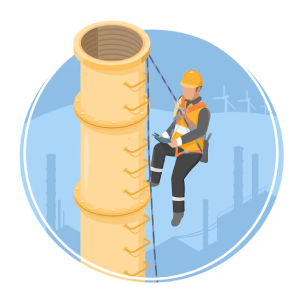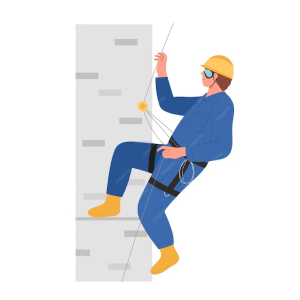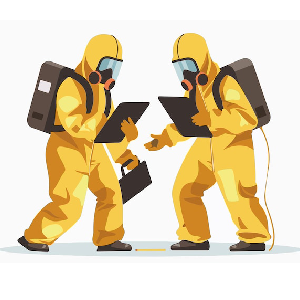Safe Work Permit System
Permit work is a documented procedure for ensuring that certain high-risk work is completed safely. It is generally used to prevent behaviours that pose significant risks to workers, equipment, or the environment. The approach entails issuing a work permit that specifies the activity, the hazards involved, and the actions necessary to minimize those hazards.
Various Types of Permits to Work
Hot Works permit to work

Hot work permits are necessary for operations that use open flames or generate heat and sparks, such as welding, cutting, grinding or using torches.
Example: In a manufacturing facility, maintenance workers are required to weld a broken pipe. Before starting, they must obtain a Hot work permit to ensure all flammable materials are removed or covered, a fire watch has been established, and suitable firefighting equipment is accessible.
Confined space entry permit

A confined space is a document that must be shown before entering a confined space, a limited access area with potential hazards due to its design or the presence of harmful substances.
Example: Workers need a confined space entry permit to enter a storage tank, ensuring the space is safe and properly ventilated.
Permit to work working at height

A height permit is a document required before undertaking any work at a height that poses a risk of falling. This includes tasks performed on ladders, scaffolding, rooftops, or other elevated surfaces.
Example: The power station workers must inspect the exterior of a high chimney. Before they begin work, they must get a work-at-height permit, ensuring the necessary fall safety equipment is available.
Excavation Work Permits

Required for digging or trenching activities that may damage deep utilities or represent a collapse hazard.
Example: A public works crew building a trench for sewage pipes needs an excavation permit to designate utilities, employ shoring, and monitor for hazardous gases.
Electrical Work Permits

Required for work on electrical systems that may cause electric shock or an arc flash.
Example: An electrician repairing a live panel must get an Electrical Work Permit to verify that safety protocols are followed and suitable PPE is used.
Hazardous Materials Permits

For handling, Storing, or disposing of hazardous materials that pose health or environmental risks.
Example: A lab technician needs a hazardous materials permit to safely dispose of expired chemicals following proper procedures.
Radiation Work Permits

Needed for tasks involving exposure to ionizing radiation, such as X-ray machine maintenance or nuclear facilities.
Example: A team repairing a radiation therapy machine must have a Radiation Work Permit to ensure safety measures are in place and radiation levels are monitored.
Permits for Hazardous Energy Sources

Required for work involving equipment that may emit hazardous energy, such as electrical or mechanical systems (LOTO)
Example: A conveyor belt mechanic needs a LOTO permit to verify that the equipment is de-energized and locked out.
Conclusion
Understanding the permit to work and its types for each task is essential for managing hazards and ensuring workers’ safety. These types and examples show the importance of permits in maintaining a safer workplace.
Green World’s PTW Training
Green World Group offers permit-to-work training to elevate your workforce and enable them to implement these systems seamlessly. Green World Group delivered permit-to-work training to the leading companies globally. Learn more …
Contact Us
Kindly call our Experts @ +91 8121563728 / +91 8015527650 or mail us @ kalyan.r@greenwgroup.com / indumanasa.m@greenwgroup.com
Get Your Query Answered / Get Expert Assistance To Choose the Right Course for You Or Your Associates





